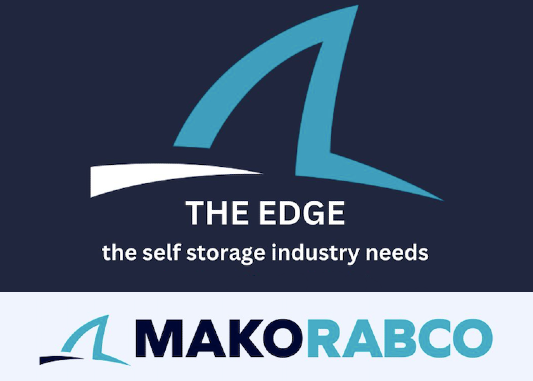5 Steps To help Develop Leadership Skills in your Managers & employees
Pictured above is MSM's Manager of the Year, Jenny Rodrigues Of ‘Ohana Self Storage.
The main goal of a self-storage facility is to attain maximum occupancy through sales, but many owners and executive managers don’t realize that selling the job to their employees is just as important as selling units to a tenant. One important aspect of hiring and retaining excellent self-storage managers is building leadership skills in those employees.
“We have to first hire the right people and then allow them ownership of the job,” says Ann Parham, CEO of Joshua Management, a division of The Parham Group in Bulverde, Texas.
Surveys show that hiring the right people for the job is the first step in instilling leadership and the second is allowing employees the autonomy to perform that job. A recent Gallup Poll showed that 58 percent of employees surveyed responded they would be happiest in a job that allows them the autonomy to do what they do best.
Hiring and instilling leadership skills and autonomy will ultimately make your employees happier and strengthen the retention rate.
Here are five steps you can follow to foster leadership skills in your employees:
1. Hiring
Good self-storage managers are “people people,” says Parham. “We started doing personality type surveys to find the people who are good salespeople and good customer service people,” says Parham. “We can put a lot of money into a facility, but if we aren’t hiring the right people for customer service, it won’t work. We can train people on the computer and how to do leases, but we can’t teach good customer service skills.”
According to Eddy, an employee management software company, employees who become good leaders also possess motivational qualities, integrity, empathy, confidence, the ability to be humble, good communication and problem-solving skills, as well as accepting accountability.
2. Training
Stacie Maxwell, vice president of marketing and training at Universal Storage Group in Atlanta, Ga., says instilling leadership in each employee is important, and for USG, it starts in the training process. “We instill leadership by showing them how to take ownership and by having them hands on in the training process,” says Maxwell. USG’s training process is implemented into four phases:
- Storage 101 – In this phase, new employees work through the basics of the processes, including completing leases.
- Storage 201 – In this phase of training, employees learn about revenue management, managing street rates and delinquent tenants, completing rent increases, selling product, and increasing sales, as well as the fundamentals of ROI.
- Assigning a mentor – At USG, each new employee is assigned an internal certified trainer to act as a mentor for 45 to 60 days. “This phase is all about marketing; we get them used to the product so they can sell,” says Maxwell.
The HR firm Eddy says assigning a mentor is one of the top ways to instill leadership in employees. “A mentor can guide the employees to improve as well as set an example,” explains Eddy’s website. The company also recommends allowing employees who have demonstrated leadership skills to eventually act as mentors to other employees.
- Auction training – The final step in the training process is teaching new employees all they need to know about the auction process. “All of our training occurs within the first 60 days, but there is continual training for everyone once a month,” Maxwell says. These training sessions are called “The Company Broadcast,” in which all employees participate via video conference.
Part of the meeting encompasses important personal announcements for employees such as birthdays, anniversaries, and birth announcements. “Employees are encouraged to share anything important,” says Maxwell. “This segment helps everyone feel like they are part of the company, a team.”
Managers and employees then share issues and other business topics. Finally, there is a training segment in which trainers refresh employees on topics that may be causing concerns within the company.
3. Encourage employees to take ownership
All successful experts within the self-storage industry say this is one of the most important steps in instilling leadership in its employees. “We try to enable our managers to take ownership in the property,” says Parham. “We have one facility in a small town in which the town actually thought our managers owned the facility and we just let them think that.”
Parham adds that it’s important employees don’t feel like “monkeys behind a desk” and says employees at her company are involved in decisions such as budgeting and expenses. “We’ve hired managers from other companies who say they never had involvement in decisions at their former jobs,” says Parham. “It’s important to employees to have that. Some companies make their employees memorize a sales script; we don’t do that because we don’t want robots. People all have different needs and approaches.”
They do not micromanage, which allows employees to make more decisions on their own and instills leadership skills. “We also believe if we make money, our employees make money,” says Parham. “That’s another way they feel they are taking ownership of the property.”
Anne Mari DeCoster, president of Kingdom Storage Partners and Self Storage Investing in Scottsdale, Ariz., agrees in allowing employees to take ownership through participation. “I promote open discussion and debate,” says DeCoster.
“Once we make a decision, we also ask for buy in from employees on the decisions.”
Todd Amsdell, president and CEO of Cleveland, Ohio-based Amsdell Companies, which operates facilities as Compass Self Storage, says it’s all about creating a company culture that fosters ownership. “We tell our employees they need to do the right thing for the customer and the company and to run their facility as if they own the company,” says Amsdell. “At the end of the day, we would rather them be a part of the process and share in the success.”
4. Assign projects
Another tool DeCoster uses in helping to instill leadership is identifying an employee’s strengths and assigning special projects. “We give them an opportunity to lead through leading a project and seeing how they demonstrate communication and other qualities,” says DeCoster. “We always circle back and hold people accountable for their projects, but it’s those people who approach me before I have to ask who are rising in leadership skills.”
5. Provide feedback and expect accountability
DeCoster says it’s very important to help employees develop leadership skills by providing feedback. “If we have something that hasn’t worked as it should or we aren’t making numbers, we will tell the employee what happened and if that’s what they intended to happen,” she says. “This approach helps them think through their decisions and the impact of their decisions.” DeCoster cites an example of someone coming into the facility and reporting not feeling welcome. “We will tell the employee what happened and ask if that was the desired outcome, and we then talk about how they can do things differently,” she says. “We also keep in mind to praise publicly and coach privately.”
Amsdell also says accountability is important. “We tell our employees to go with their gut about what is the right thing. They might make a mistake, and we also think it’s better for them to talk about it and own up to it rather than take a chance it wasn’t the right thing to do.”
More Content
Popular Posts
The self storage industry is in a precarious...
Joe Shoen, CEO of U-Haul, has had enough.
Like its name implies, Surprise, Ariz., a...
Joe Shoen has had enough.
In a record-breaking deal finalized May 12,...
Senate Bill 709 (SB709) has many in the...
Donald Trump has just reclaimed the White...
The question of “abandonment” of stored...
Self-storage operators wear a lot of hats....
In 1992, Clinton strategist James Carville...
Recent Posts
When Neville Kennard left for a work trip to...
Self-storage software is no longer...
The self-storage industry continues to...
Fires in California. Tornadoes in Kansas....
From policy pivots in Ottawa to tariff...
Self-storage operators have struggled to...
Their signature red coats may draw attention...
Nailing down Josh and Melissa Huff for an...





















.gif)